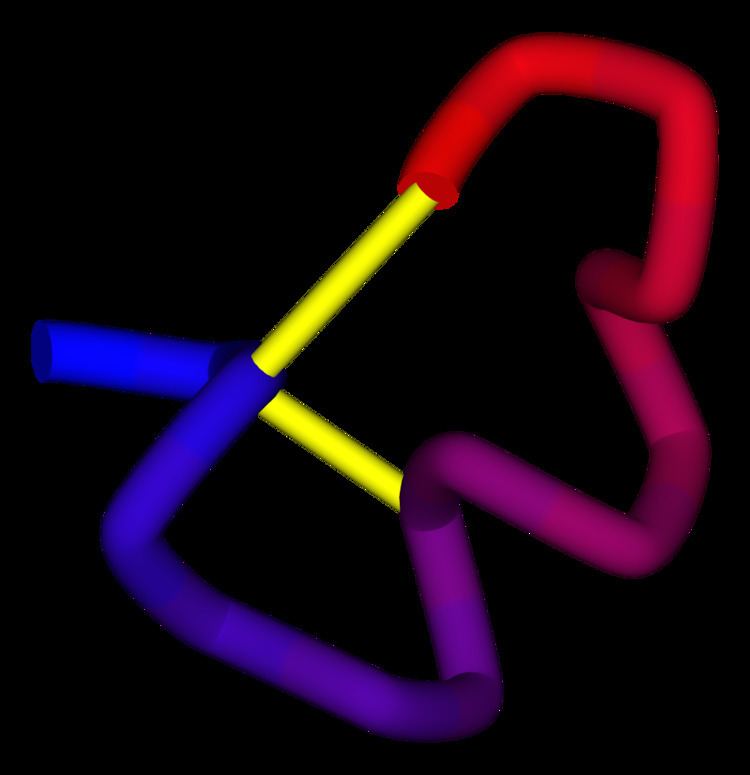Symbol Toxin_8 InterPro IPR009958 SCOP 1mii | Pfam PF07365 PROSITE PDOC60004 SUPERFAMILY 1mii | |
 | ||
A conotoxin is one of a group of neurotoxic peptides isolated from the venom of the marine cone snail, genus Conus.
Contents
- Hypervariability
- Disulfide connectivities
- Types and biological activities
- Alpha
- Delta and kappa and omega
- Mu
- References
Conotoxins, which are peptides consisting of 10 to 30 amino acid residues, typically have one or more disulfide bonds. Conotoxins have a variety of mechanisms of actions, most of which have not been determined. However, it appears that many of these peptides modulate the activity of ion channels. Over the last few decades conotoxins have been the subject of pharmacological interest.
Hypervariability
Conotoxins are hypervariable even within the same species; the genes that encode them do not act endogenously, and thus are less conserved and more likely to experience gene duplication events and nonsynonymous mutations which lead to the development of novel functions. These genes will experience less selection against mutations, and therefore mutations will remain in the genome longer, allowing more time for potentially beneficial novel functions to arise. Variability in conotoxin components reduces the likelihood that prey organisms will develop resistance; thus cone snails are under constant selective pressure to maintain polymorphism in these genes because failing to evolve and adapt will lead to extinction (Red Queen hypothesis).
Disulfide connectivities
Types of conotoxins also differ in the number and pattern of disulfide bonds. The disulfide bonding network, as well as specific amino acids in inter-cysteine loops, provide the specificity of conotoxins.
Types and biological activities
The number of conotoxins whose activities have been determined so far is five, and they are called the α(alpha)-, δ(delta)-, κ(kappa)-, μ(mu)-, and ω(omega)- types. Each of the five types of conotoxins attacks a different target:
Alpha
Alpha conotoxins have two types of cysteine arrangements, and are competitive nicotinic acetylcholine receptor antagonists.
Delta and kappa, and omega
Omega, delta and kappa families of conotoxins have a knottin or inhibitor cystine knot scaffold. The knottin scaffold is a very special disulfide-through-disulfide knot, in which the III-VI disulfide bond crosses the macrocycle formed by two other disulfide bonds (I-IV and II-V) and the interconnecting backbone segments, where I-VI indicates the six cysteine residues starting from the N-terminus. The cysteine arrangements are the same for omega, delta and kappa families, even though omega conotoxins are calcium channel blockers, whereas delta conotoxins delay the inactivation of sodium channels, and kappa conotoxins are potassium channel blockers.
Mu
Mu-conotoxins have two types of cysteine arrangements, but the knottin scaffold is not observed. Mu-conotoxins target the muscle-specific voltage-gated sodium channels, and are useful probes for investigating voltage-dependent sodium channels of excitable tissues. Mu-conotoxins target the voltage-gated sodium channels, preferentially those of skeletal muscle, and are useful probes for investigating voltage-dependent sodium channels of excitable tissues.
Different subtypes of voltage-gated sodium channels are found in different tissues in mammals, e.g., in muscle and brain, and studies have been carried out to determine the sensitivity and specificity of the mu-conotoxins for the different isoforms.
